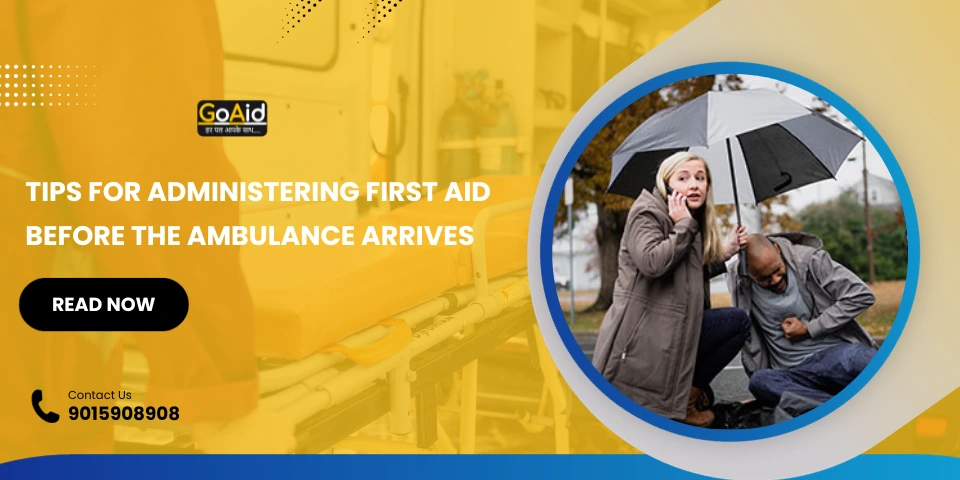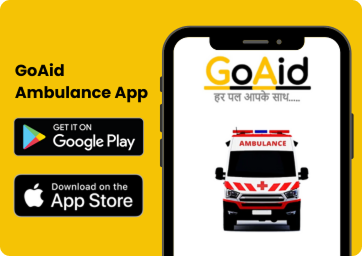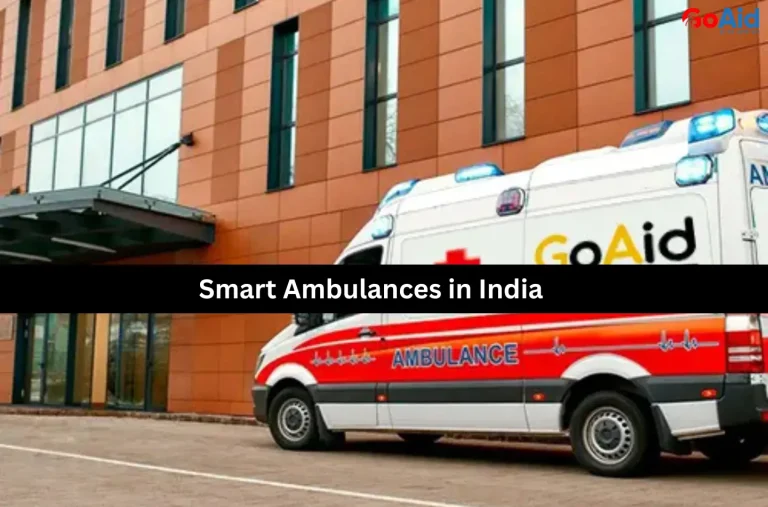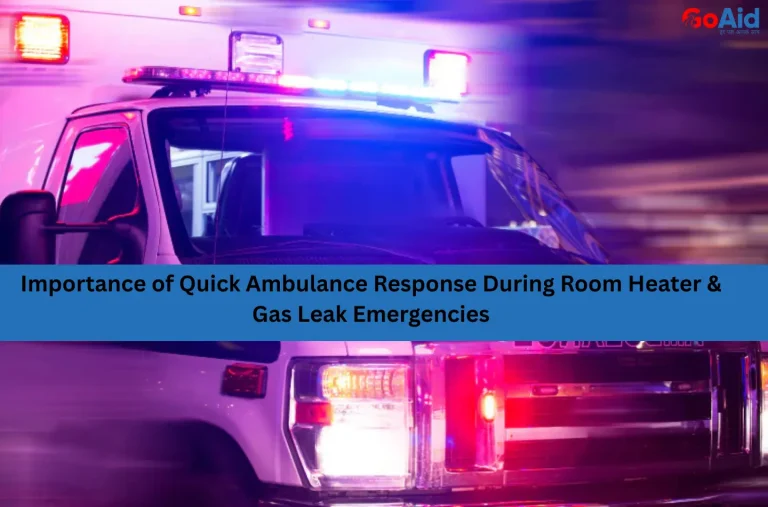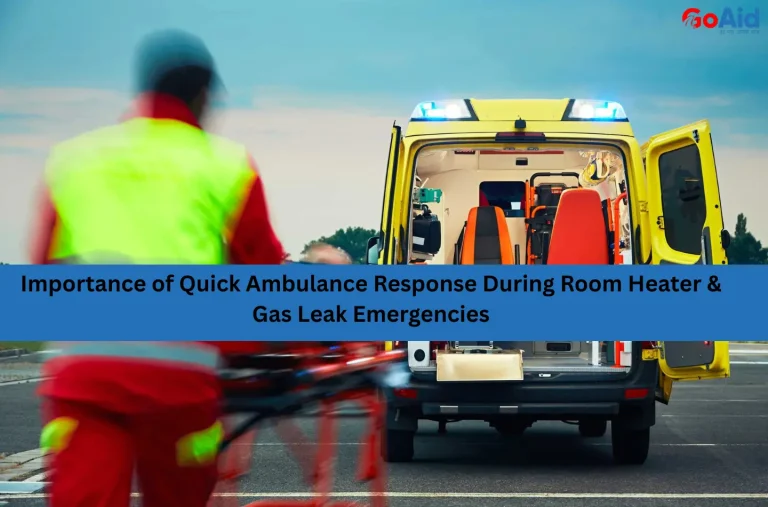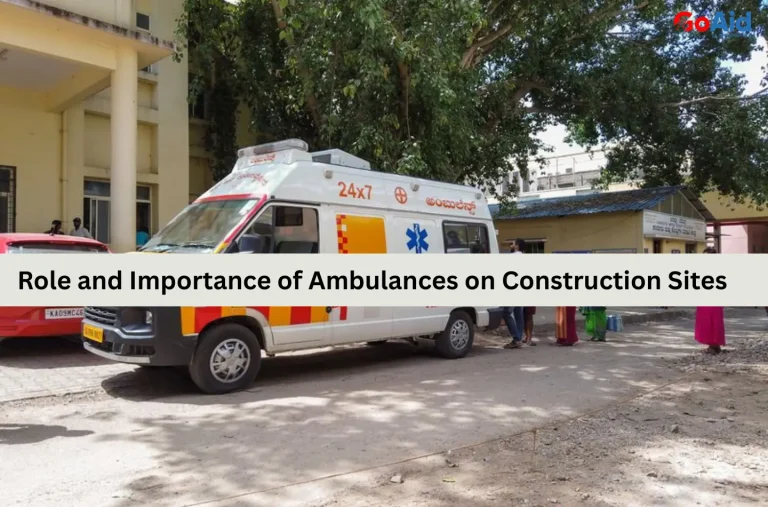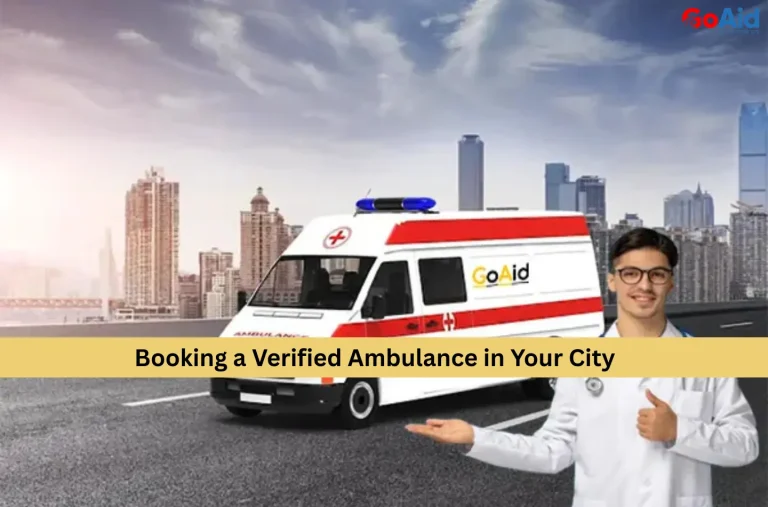Tips for Administering First Aid Before the Ambulance Arrives: In hours of emergency, we must know of First Aid Before the Ambulance Arrives. Because, Sometimes we canŌĆÖt just sit back and wait till the ambulance arrives. If you are not booking the GoAid Ambulance Service which arrives to you in just 10 minutes, then you may need to wait for more than 20-30 minutes in urban Areas of India. If you are living or facing a medical emergency in a Rural area of India, then you may need to wait for emergency transportation help for more than 40 minutes.
This period, till the ambulance arrives at the patient, is too critical and used wisely, this may lead to help the patient to live much longer. This is why, everyone should be aware of Tips for Administering First Aid Before the Ambulance Arrives.
In this blog, we have explained it very easily. You must need to read this blog completely to get all the related information about ŌĆ£Tips for Administering First Aid Before the Ambulance ArrivesŌĆØ.
So, letŌĆÖs start-
Tips for Administering First Aid Before the Ambulance Arrives
We have listed all the tips for administrating first aid which you will need before the ambulance arrives.
- Stay Calm: In any kind of situation, you need to keep yourself calm first. It will help you think more clearly and reassure the person in need.
- Call for Help: After facing any critical & medical emergency, you should dial emergency services immediately. Then you have to provide clear and accurate information about the location, situation, and number of people involved to them.
- Assess the Situation: You have to try to understand the situation as quickly as possible. You have to go for safety first. Please Remove any immediate dangers if possible.
- Check Responsiveness: if any person is facing a medical emergency, then please Gently tap the person and ask if they are okay. If unresponsive, call out for help and begin CPR if necessary (Learn it now if you donŌĆÖt know of it).
- CPR if Necessary: Learning CPR is crucial. If the person is not breathing, start CPR. Give 30 chest compressions followed by 2 rescue breaths. You wonŌĆÖt need to learn this in that immediate situation, learn it now.
- Clear the Airway: If the person is choking, perform the Heimlich maneuver to clear the airway. Learn about it on YouTube.
- Stop the Bleeding: If there is a wound, apply firm pressure with a clean cloth or bandage to control bleeding. This step may save the patients till medical help arrives.
- Elevate Injured Limbs: For sprains or broken bones, put that body part above the heart level to reduce swelling.
- Use a Splint: Immobilize broken or sprained limbs with a splint or makeshift support.
- Treat Burns: For there are minor burns, cool the area with cool water. Do not use ice or oily substances.
- Check for Shock: If the person is in shock after any accident, lay them down with their legs elevated and then keep them warm.
- Maintain Body Temperature: If the person is cold, cover them with a blanket or clothing to maintain body heat.
- Administer Medication: If the person has a known condition, such as an allergy or asthma, help them with their prescribed medication.
- Allergic Reactions: If the person has an allergic reaction, use an EpiPen if available and seek medical help.
- Seizures: If the person is having a seizure, clear the area of any dangerous objects and protect their head.
- Stay with the Person: Do not leave the person alone. Continually monitor their condition until help arrives.
- Provide Comfort: Speak calmly and reassuringly to the person. Let them know that help is on the way.
- Keep the Person Still: If there is a possibility of a spinal injury, avoid moving the person unless necessary for safety.
- Positioning: If the person is conscious and breathing, position them in the recovery position to maintain an open airway.
- Update the Emergency Services: If the person’s condition changes while waiting for the ambulance, update emergency services with the new information.
Also Read: Ambulance Response in Rural vs. Urban Areas: Bridging the Gap
FAQs Related to Tips for Administering First Aid Before the Ambulance Arrives
Q: What should you do before an ambulance arrives?
Ans: Call emergency services, assess the scene and the person’s condition, and provide immediate care as needed.
Q: What are the general steps to take before administering first aid?
Ans: Ensure safety, call for help, assess the situation, and check the person’s responsiveness and vital signs.
Q: How do you administer first aid in an emergency?
Ans: Call for help, assess and prioritize care based on the person’s condition, provide immediate life-saving interventions, and offer comfort and reassurance.
Q: What 4 steps need to be taken during first aid emergencies?
Ans: Assess the scene for safety, call for help, check for responsiveness and vital signs, and provide immediate care based on the person’s needs.

